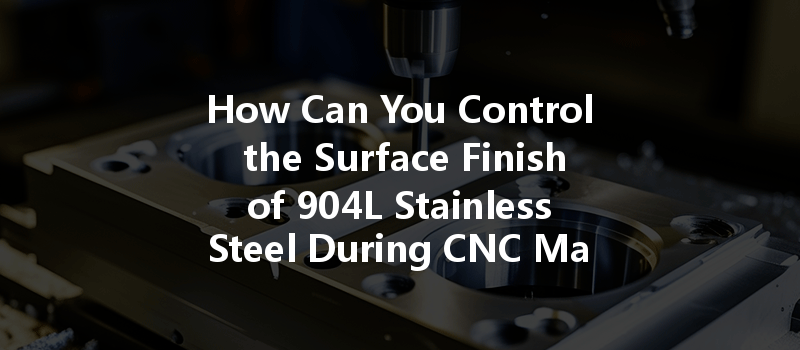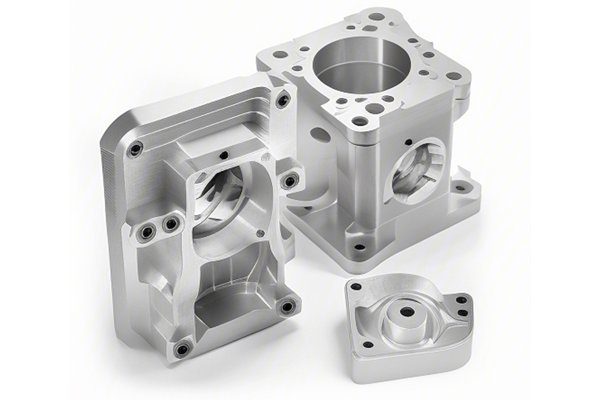Did you know that the global stainless steel market is projected to reach approximately $210 billion by 2027? With its excellent corrosion resistance, high strength, and versatile applications, 904L stainless steel is increasingly becoming a favorite among manufacturers and fabricators. Yet, one of the most critical aspects of machining this particular metal lies in controlling its surface finish. This blog aims to explore the complex factors involved in CNC machining of 904L stainless steel and provide comprehensive solutions to ensure optimal surface quality.
Understanding 904L Stainless Steel
904L stainless steel is a non-stabilized austenitic stainless steel alloy containing high levels of chromium, nickel, and molybdenum. It was initially developed to resist sulfuric acid corrosion and is widely used in various industries, including chemical processing, oil and gas, and marine applications.
Key Characteristics of 904L Stainless Steel
Why is Surface Finish Important?
The surface finish of any material plays a vital role in determining its performance, aesthetics, and durability. For 904L stainless steel, specific applications may require different surface finishes:
Focusing on the surface finish can lead to better product performance, reduced maintenance costs, and enhanced longevity.
Factors Affecting Surface Finish
A series of interconnected factors influence the surface finish of 904L stainless steel during CNC machining:
Tool Selection
Choosing the right tool material and geometry is paramount in determining surface finish:
Cutting Parameters
The following cutting parameters should be meticulously adjusted to enhance the surface finish:
Machining Strategy
The machining pattern and techniques used during the operation are equally significant:
Coolant Usage
Utilizing the right coolant can make a marked difference:

Workpiece Preparation
Before machining begins, the workpiece itself must be adequately prepared:
Techniques for Achieving Optimal Surface Finish
Let’s dive deeper into specific techniques that can be employed:
Surface grinding is a process that uses a rotating abrasive wheel to achieve a flat surface, often suited for producing fine finishes.
Procedure:
For applications needing a shiny, polished appearance, a two-step polishing process may be used:
With advancements in technology, adaptive machining allows for real-time adjustments to machining parameters based on feedback from surface finish measurements.
Advantages:
If surface finish requirements are not met through machining, various post-processing techniques can be employed:
Case Studies: Successful CNC Machining of 904L Stainless Steel
Case Study 1: Oil and Gas Industry Components
In one instance, a manufacturer was tasked with machining complex components used in high-pressure oil drilling. By implementing a combination of optimal tool selection, adaptive machining, and advanced coolant systems, they achieved a superior surface finish, leading to improved component reliability and performance.
Case Study 2: Chemical Processing
A fabricator of chemical processing equipment faced challenges with corrosion resistance and surface quality. After transitioning to a polishing procedure combined with electropolishing, they significantly enhanced the surface finish, resulting in longer service life for their products.
Controlling the surface finish of 904L stainless steel during CNC machining is an intricate process involving multiple interdependent factors. From selecting the right tools to employing meticulous machining and finishing techniques, every detail matters.
By understanding and applying the techniques and strategies discussed in this blog, manufacturers can achieve superior surface finishes, resulting in improved performance, reduced wear, and longer component longevity.
In a competitive market where quality can set a company apart, investing time and resources into mastering surface finish processes is not just beneficial—it’s essential. As we march into an era of advanced manufacturing technologies, refining the surface finish may well become an indicator of an organization’s commitment to quality and innovation. Always remember: a polished part is not just about looks; it signifies durability, efficiency, and a dedication to excellence in craftsmanship.






